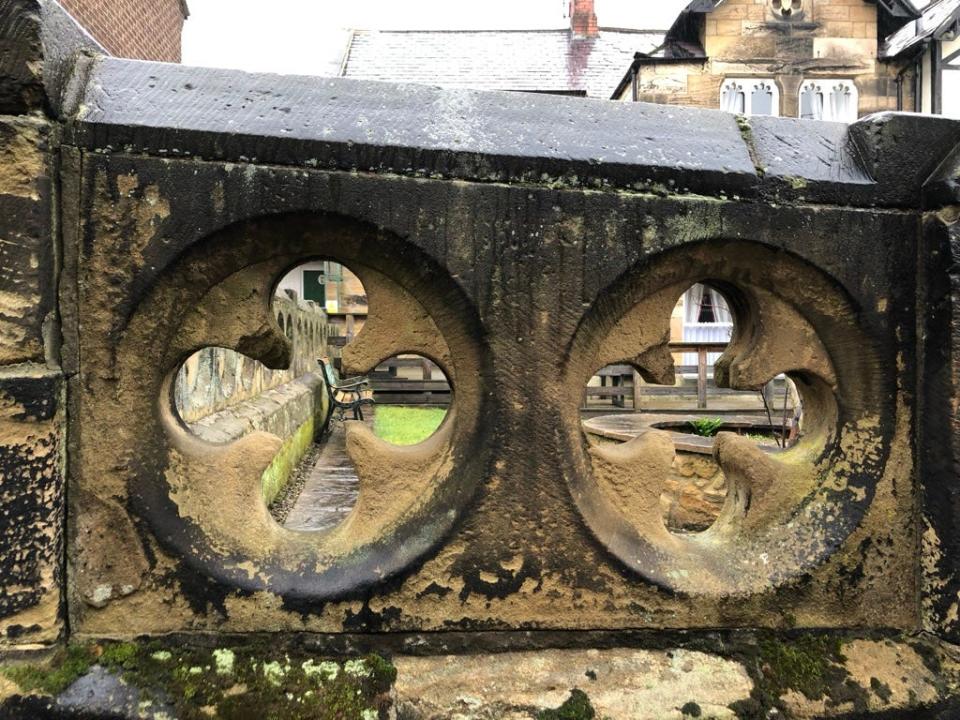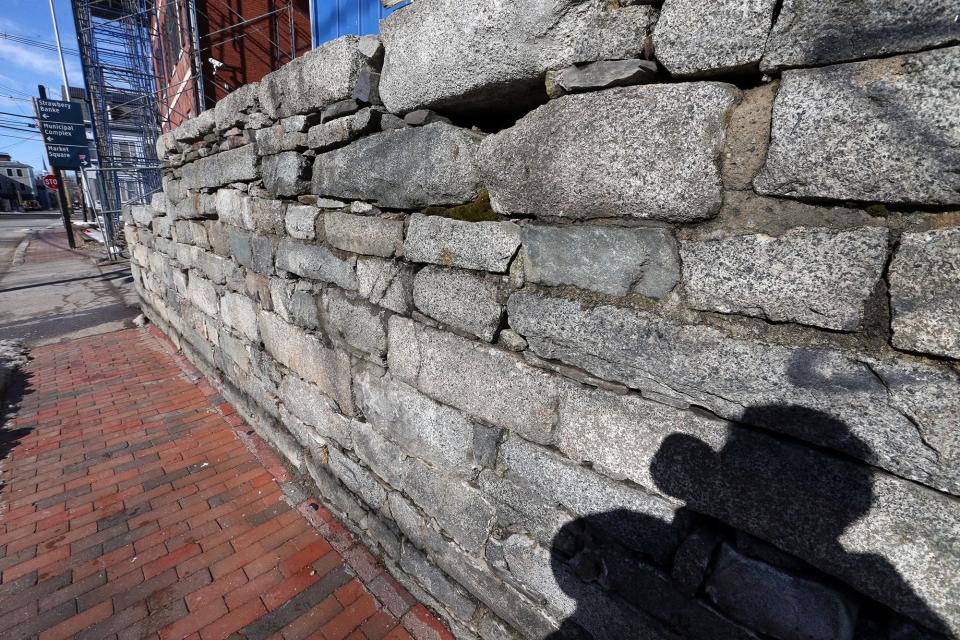Duffy: Reflecting on history and the wonders of a well-made wall
In his splendid poem “Mending Wall” Robert Frost wrote that “something there is that doesn’t love a wall.” He was referring to New England frost heaves and the damage caused by careless hunters. Most of us adore a well-made wall. In fact, one of my earliest sense memories — I cannot have been much older than a toddler — is of running my hand along the beautiful old sandstone wall that bordered the house where I was born. It’s still a wonder to me: How could something so solid and substantial feel so soft?

I got to thinking about walls, and history, when a small group of residents recently protested a developer’s request for permission from our city Historic District Commission to temporarily disassemble and then rebuild one of Portsmouth’s old walls. The developer’s case for rebuilding the wall on Court Street was based on a professional assessment of its vulnerability during the planned construction project. The critics believe the wall should be left as is; from their perspective, to do otherwise would be an insult to Portsmouth’s history. As usual, when emotions get stirred up, it can help to step back and ask some quieter, basic questions, which is what I’m proposing here.

I have only a layman’s knowledge of the art and science of preservation and conservation. However, over the years, I’ve been fortunate to visit ancient cultural sites in Greece, China, India, Egypt, and Italy, and have witnessed the many ways people have sought to preserve their history embodied in ancient structures, millenia older than anything in the United States. I also lived for five years in Germany, a nation that demonstrates extraordinary skill in preserving, restoring, and sometimes rebuilding from scratch historical buildings.
One view I’d heard from some residents is that history – sorry, this sounds like a Yogi Berra thing – is purely a thing of the past. But the view I’ve settled on is that history is actually a living thing — a flowing, dynamic process that folds in decisions our city makes every day. It’s additive. What we build today becomes, for better or worse, tomorrow’s history. Sometimes you get the feeling that people think history stopped at some point and that everything we do now has to live in the shadow of some old mastery. Many of the faux-brick buildings we see around town today are the product of that thinking. While some of them are successful and attractive buildings, there’s nothing authentic about them. Moreover, the cumulative architectural effect tends towards dullness. Yet I hope we’ve learned that in trying to replicate the past, we risk short-changing the present, and missing the point that we ourselves contribute to history every day.

What if the threat to the wall on Court Street had been different? What if the wall were located instead down by the Piscataqua River and was in predictable danger from rising sea level? (Actually we’re already there; just ask the folks at Strawbery Banke.) Would the same people object to dismantling the wall and moving it to higher ground, where it could be rebuilt for the admiration of future generations? If it was relocated, what, if anything, would be lost? Or is the fuss just because a developer is involved?
And how in reality is Portsmouth doing regarding the preservation of its historic buildings? From personal observations, and again admittedly from a layman’s perspective, I’d say that many of our finest historic buildings are in better shape — renovated and updated for the 21st century, often at great expense — than I’ve ever seen them. Contrary to practices in former times, Portsmouth no longer allows historic buildings to be torn down to make room for new buildings. To my knowledge, the only thing we’ve sacrificed recently to new architecture, though some of it regrettably lackluster to be sure, are large tracts of asphalt parking space and abandoned lots.
Back to Court Street. So what’s the problem with disassembling and rebuilding an old stone wall when circumstances demand it, for the sake of the wall? It reminds me of a similar problem, but one on a much grander scale. In the late 1950s, the Egyptians built the Aswan Dam to create a huge new freshwater reservoir, Lake Nasser. Unfortunately one of their most iconic ancient monuments — the rock-carved temples of Abu Simbel — stood to disappear under the higher water. In an astonishing feat of archaeological and engineering expertise, the Egyptians disassembled the temples, cut them into 30-ton blocks, and relocated them against an artificially created hill 60 feet higher and 600 feet back from the water.
When you stand in front of the temples today, do you experience them as inauthentic and drained of their true history? Or do you see the relocation that saved them as now being an essential part of their history? Do you marvel that modern Egyptians cared enough about these extraordinary 3,300-year-old structures to create an ingenious way to keep them for the future? Did the Egyptians somehow dilute the “history” of the monument or did they actually enhance it? I know one thing: to face those temples as a visitor today inspires only awe.
The last time I visited my childhood wall was just before the pandemic. It seemed to me like the same wall I’d visited a number of times over the years. This time I ran my adult hand across the sandstone blocks, which certainly seem to be holding their own against the elements. But would I have even known it if during the interim the wall had been dismantled and carefully rebuilt for a good reason? If I didn’t know, would the wall’s history as I experience it have been degraded in any meaningful way? I simply can’t get to a “yes” answer.
There is no reason to doubt the developer of the new project on Court Street is acting in good faith. Mark McNabb has demonstrated over and again that he takes his role as a corporate citizen of Portsmouth seriously. He is widely regarded as one of the city’s most conscientious developers. So let’s accept for the moment that construction of the approved new building on Court Street does indeed temporarily threaten the integrity and safety of the wall, and that measures must be taken. Now imagine that the wall on Court Street is carefully dismantled and then faithfully rebuilt by stone masons who demonstrably know what they are doing (and who in any case probably have a deeper craftsman’s respect for the wall and the labor that went into it). Add to the reconstructed wall a small, unobtrusive bronze plaque that reads:
“In 2023, this wall was faithfully rebuilt to preserve its character for future generations. We honor the Portsmouth citizens who cared about their city’s history and the skilled craftsmen who made the project possible.”
What would that say to the people of future Portsmouth? I think it would speak highly of us. It would speak to our values and how far we’ve come since the days when we often neglected our obligation to cherish the past. We would have made ourselves part of its history, something we could feel proud of. And life would go on.
Gerald Duffy is a resident of Portsmouth.
This article originally appeared on Portsmouth Herald: Duffy: Reflecting on history and the wonders of a well-made wall

